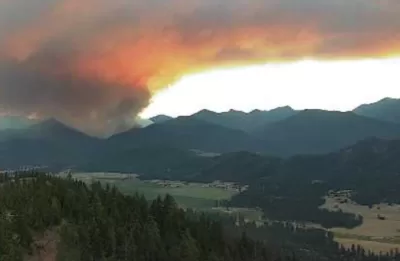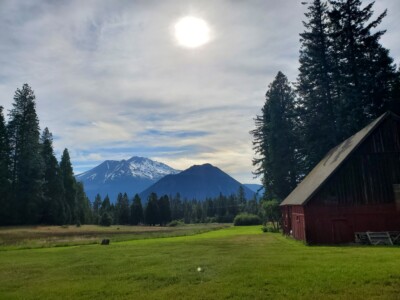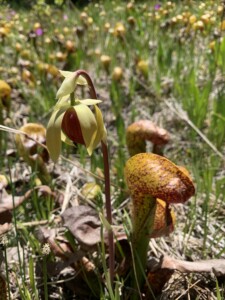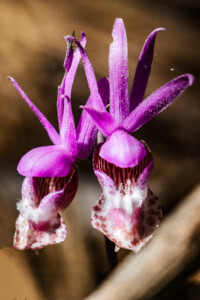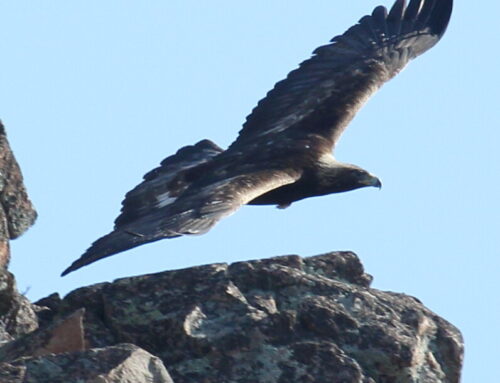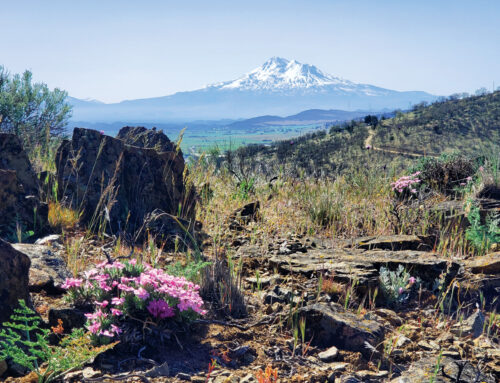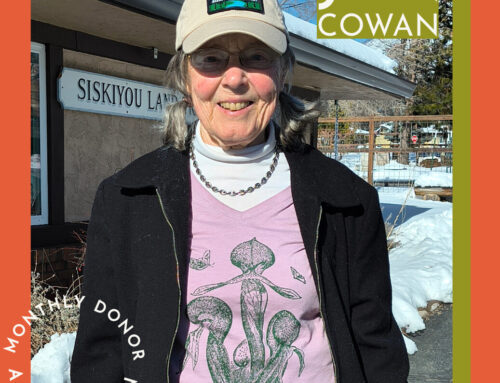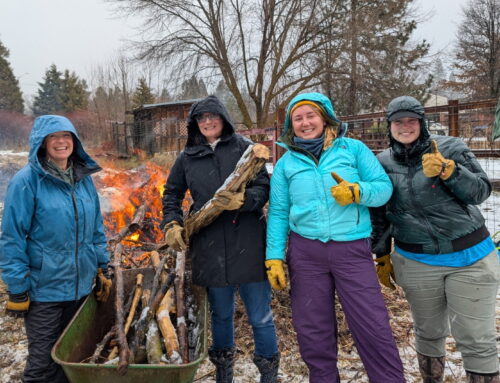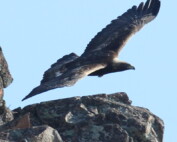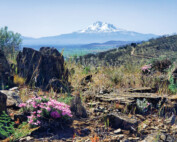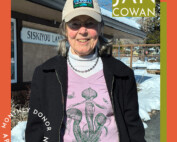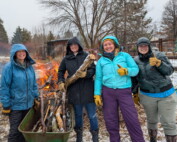Community Partnerships and Proactive Forestry Practices Essential in Shelly Fire Response
As firefighting efforts on the Shelly Fire in Scott Valley wind down, Siskiyou Land Trust extends our deepest gratitude to the tireless multi-agency efforts that have contained the blaze. The fire affected over 15,500+ acres including approximately 10,000-acres of one of SLT’s 18,000+-acre forest conservation easements. This easement, established in perpetuity, remains a steadfast commitment to protecting the land. Our dedication to stewarding this forest endures, ensuring its long-term preservation.
Learning to live with wildfire and managing working forests during such catastrophic events is challenging. Siskiyou Land Trust is dedicated to working with our landowner partners to navigate these difficulties. In this case, the proactive fuels reduction work conducted by our partners at EFM, in collaboration with CalFire, Jefferson Resource Company, Scott River Watershed Council, Quartz Valley Indian Reservation, Mid Klamath Watershed Council, Etna Fire Department, Shasta Valley RCD, Siskiyou PBA, and many other members of the Scott Valley community, played a vital role in protecting surrounding communities – many of which are home to our staff, board, and partners. Work included shaded fuel breaks, removal of small diameter trees, and prescribed fire. Their effective fire mitigation and defensible space practices set a valuable example for how we protect communities near other working forests in Siskiyou County.
As the threat and impact of large-scale wildfires draw nearer, we remain focused on managing this property as a forest. Recovery efforts are aimed towards healthy, late-seral, diverse-aged habitat beneficial to both the community and ecosystem. SLT’s role will be to monitor and document these recovery efforts. We are honored to play our part in safeguarding the lands we love and share.
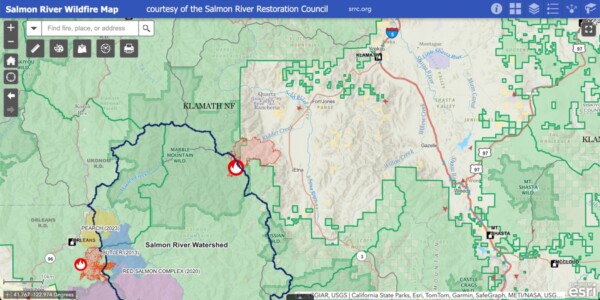
Shelly fire incident in relationship to the Salmon, Scott, and Shasta watersheds and population centers. Also visible is the current Boise fire near Orleans in the lower left.
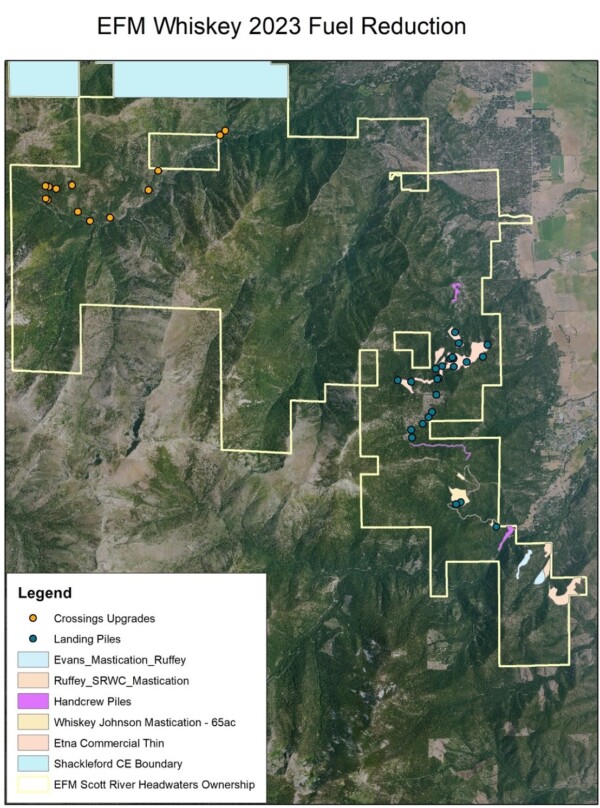
Fall 2023, conservation partners and members of the Scott Valley community conducted controlled burns on EFM forest land, now burned in the 15,000+-acre Shelly fire. SLT holds a conservation easement on this land. A video of the controlled burn collaboration was put together by Luna Buchin, Scott Valley and Salmon River resident:
https://www.youtube.com/watch?v=CCeVXh4OeMw
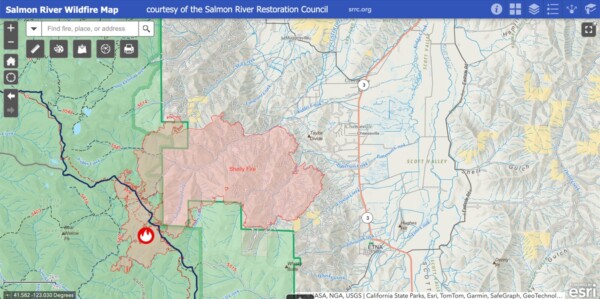
Shelly fire in relationship to Scott Valley. Green shaded area – federal land managed by the US Forest Service; grey shaded area – privately owned and managed land; pink area is the extent of the fire. Map by Salmon River Restoration Council.
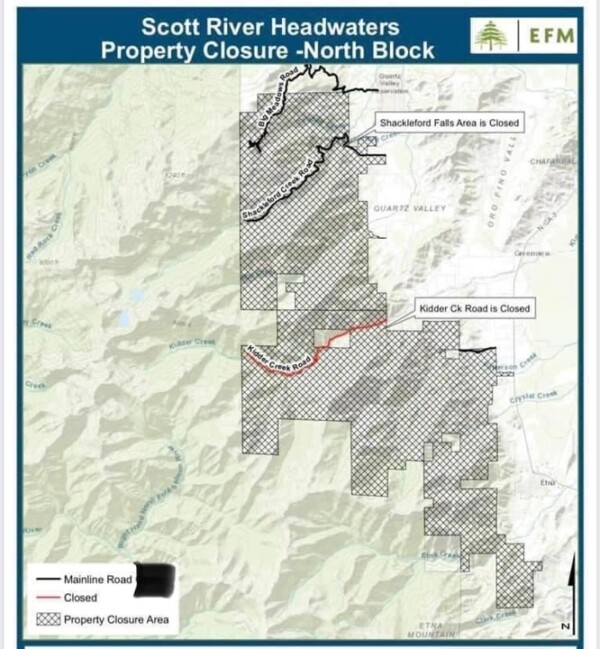
EFM holdings and SLT conservation easement illustration: Cross-hatch is EFM property – Whisky Forest CE extends from the horizontal line above Kidder Creek Road to the bottom. Shackleford Forest CE project is the Cross hatched private land to the north covers approx. 12,000-acres.
Historic Luginbuhl Ranch Preserve: Conservation in Action
Welcome to the place where Siskiyou Land Trust’s journey began over 30 years ago. The 320-acre Luginbuhl Ranch Preserve is now fully under SLT’s care. It was this special headwaters that sparked the mission to protect and celebrate the diverse landscapes of our region. Siskiyou Land Trust founder, Tom Hesseldenz, along with the Luginbuhl family and other community members, first envisioned a united effort to safeguard Siskiyou County’s working and wild lands from conversion and subdivision.
Acquired by SLT in early 2024 with grant funding from the Sierra Nevada Conservancy and Wildlife Conservation Board, we’re excited move forward with the work of exploring, surveying, and bringing together the resources needed to protect this land!
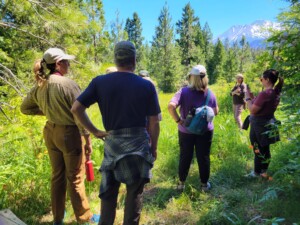
SLT Board and Staff with visitors from the Community Foundation of the North State and the Rangeland Trust at Luginbuhl fen.
The Luginbuhl property is truly special, featuring source waters for the Upper Sacramento and Shasta Rivers, fens with the rare California Cobra Lily aka pitcher plant (Darlingtonia californica), and forest floors with the delicate Snow Orchid (Cephalanthera austiniae). SLT’s long term property management will maintain a resilient forest ecosystem that retains carbon, buffers the Upper Sacramento and Shasta Rivers from drought and extreme runoff events, and reduces wildfire to surrounding forest and communities. We’re eager to learn more about this incredible place and share more with you in the months and years ahead.
While the property is closed to the public, all are invited to SLT’s Annual Meeting which will be a community gathering at the Luginbuhl Ranch Preserve on Saturday, October 5 in the afternoon. We are greatly looking forward to hosting this family friendly event in a spectacular setting. Logistics and additional details will be shared in September.
Wherrit Demonstration Forest Taking Steps Forward in Fire Resilience
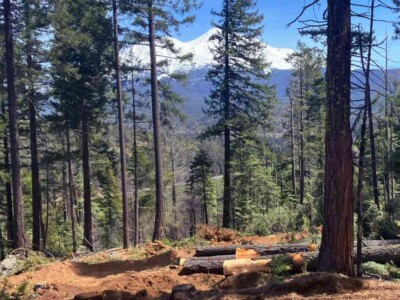
Improved sunlight and nutrient access for remaining trees is a key benefit of the mastication process at the Wherrit Forest. For safety reasons, the area remains closed until further notice.
SLT has been engaging with neighbors, scientists, and conservation partners for two decades to learn about our community’s forest stewardship needs and opportunities. The importance and immediacy of forest stewardship have become evident over the past decade due to intensifying environmental conditions such as increased drought, tree mortality, and wildfires affecting these areas.
This spring, SLT made some exciting and challenging decisions to contribute to long-term solutions. We are enthusiastic about reintroducing Traditional Ecological Knowledge, such as prescribed fire, and addressing issues through collaboration.
SLT faced the difficult but necessary decision to address heavy fuel loading and tree die-off in areas where both SLT and our neighbors enjoy walking. As the extent and pace of Douglas fir die-off became clear, SLT decided to remove a significant portion of these trees. This action is especially important for creating shaded fuel breaks on Rainbow Ridge, which will act as control lines for prescribed burns and as staging areas for potential fires.
To enhance safety and access, SLT expanded our road system to provide better access for neighbors to the north and to support firefighting efforts if needed on public lands. The critical need for improved road connectivity was highlighted during an arson incident on the property in 2022, when firefighters faced difficulties accessing the fire due to inadequate roads.
Currently at the Wherrit Demonstration Forest, forestry crews are now masticating, which involves grinding and chopping woody debris. Masticating opens the canopy and forest floor, allowing remaining trees to access more nutrients, sunlight, and water. Crowded trees compete for these resources, making them less healthy. Over the past decade, forest mastication has significantly reduced wildfire hazards and improved forest health in California and beyond.
By removing dead and dying trees from the Wherrit Demonstration Forest, our forestry partners at Jefferson Resource Company (JRC) and Shasta Valley Resource Conservation District (SVRCD) are enhancing the forest’s resilience and re-establishing the shaded fuel breaks on Rainbow Ridge. The project’s completion timeline depends on ensuring operator safety, and the area remains closed to the public until work is finished. Please respect our forest closure for your safety and for the safety of our forestry partners as they work. We appreciate your patience as we steward the forest.
For information about Douglas fir die-off, the Jefferson Journal published an article by Erik Neumann in their July/August 2024 edition Douglas Fir Die-off in Southern Oregon Gives a Glimpse Into the Future of West Coast Forests – JPR (pdf).
For JPR’s Jefferson Journal on the web, visit: https://www.ijpr.org/jefferson-journal
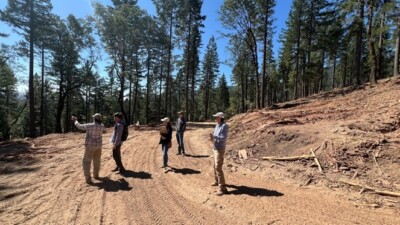
Forest Stewardship on Rainbow Ridge – Mount Shasta
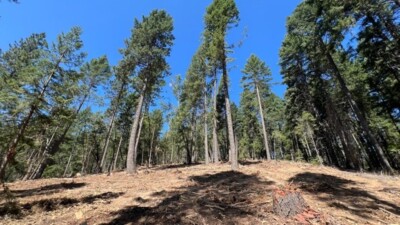
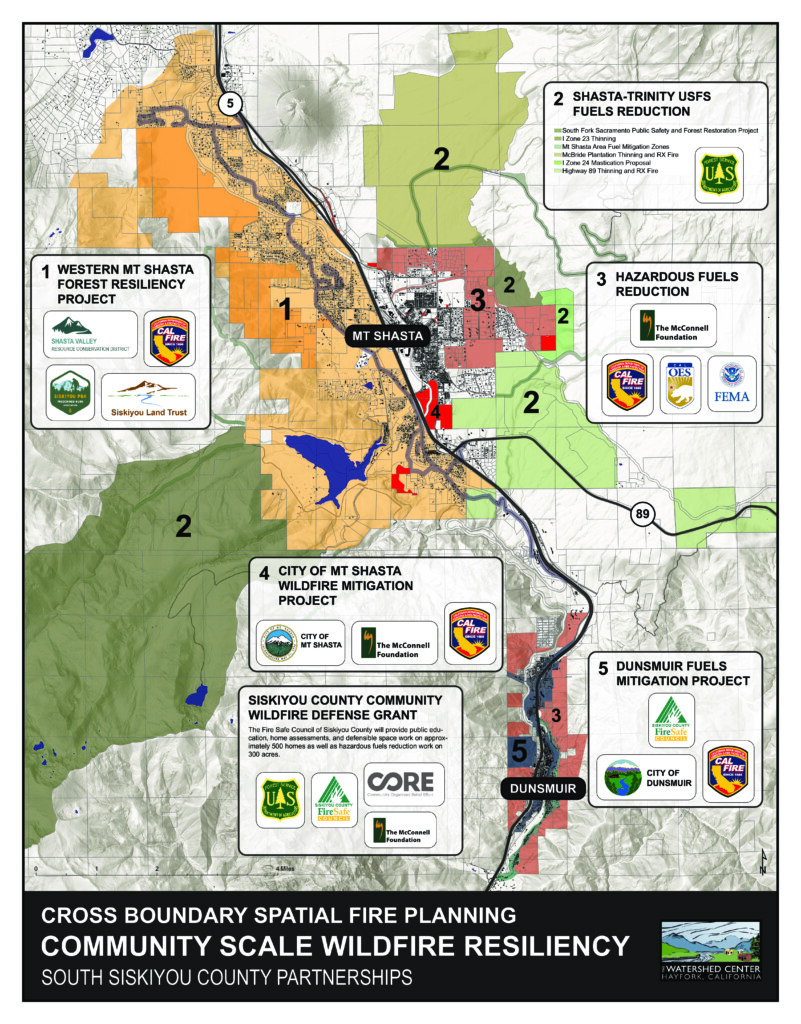
South Siskiyou Cross Boundary Spatial Planning
source: https://www.thewatershedcenter.com/
